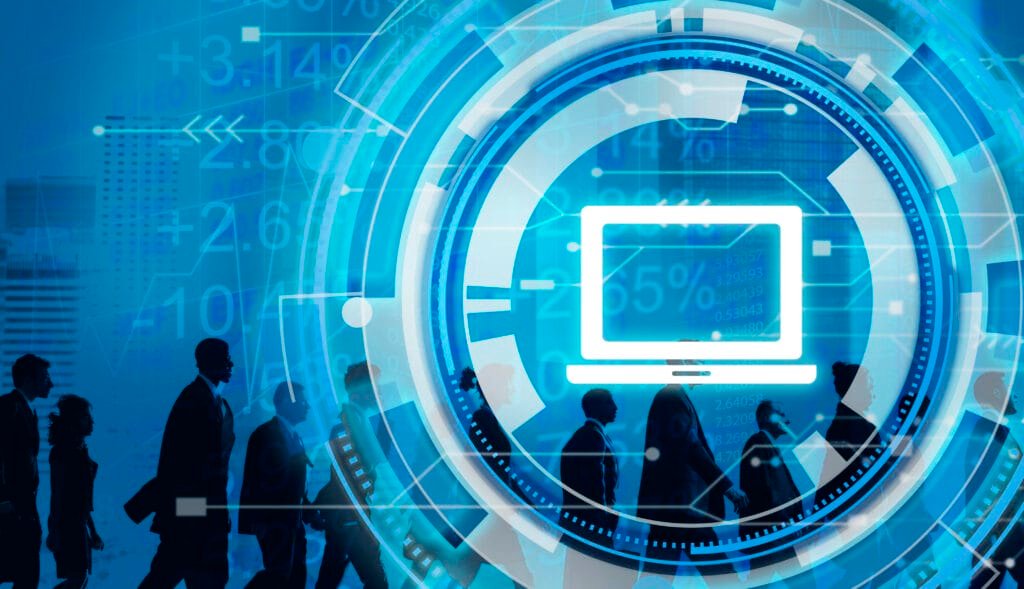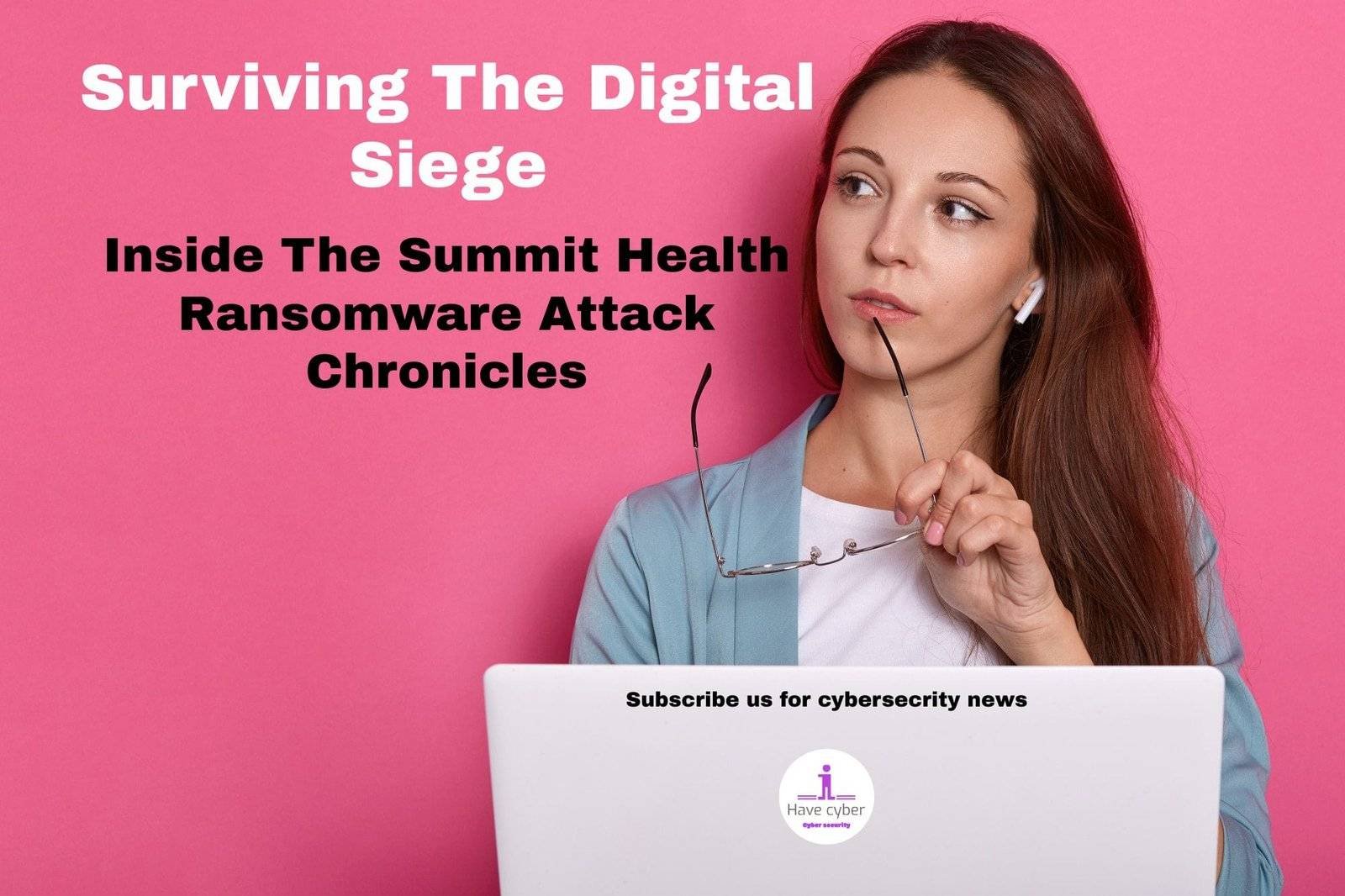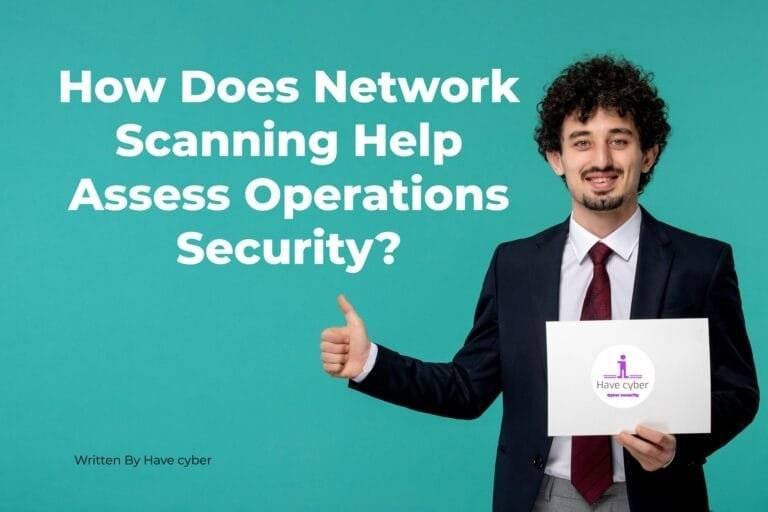Surviving the Digital Siege: Inside the Summit Health Ransomware Attack Chronicles
In our digitally connected world, ransomware—malicious software that locks users out of a computer system until a certain amount of money is paid—has become a common concern. The Summit Health ransomware attack was one recent event that shocked the healthcare industry. This article delves into the frightening history of the digital siege, analyzing the origins, consequences, and aftermath of the assault while highlighting significant lessons for the future.
Introduction
Definition of Ransomware
One kind of malicious software that encrypts a victim’s files is called ransomware. After that, the attacker demands a ransom, typically in bitcoins, to get access back.
Overview of the Summit Health Ransomware Attack
A ransomware assault at Summit Health, a renowned healthcare provider, revealed weaknesses in vital infrastructure and sparked worries about the protection of private patient information.
Importance of Cybersecurity in the Digital Age
Strong cybersecurity measures are essential as our reliance on digital systems increases. The Summit Health disaster is a sobering reminder of what may happen when security procedures aren’t followed.
The Genesis of the Attack
How Ransomware Attacks Typically Start
Understanding the usual points of entry for ransomware attacks is crucial for businesses seeking to improve their security measures against digital risks.
1. Phishing Emails as Gateways
One of the most popular entrance routes for ransomware attacks is still phishing. Attackers frequently include harmful attachments or links inside of what appear to be innocent emails, fooling gullible staff members into clicking and unwittingly giving access to the company’s network.
2. Malicious Websites and Drive-By Downloads
Ransomware can also spread through unwittingly downloading viruses or visiting hacked websites. Strong web security measures are essential in light of drive-by downloads, which occur when malware is automatically downloaded without the user’s awareness.
3. Exploiting Unpatched Software
Attackers commonly take advantage of holes in outdated or unpatched software. The need for timely patch management is underscored by the fact that companies that neglect software upgrades provide hackers the opportunity to take advantage of vulnerabilities that are already known.
4. Remote Desktop Protocol (RDP) Exploitation
Insecure Remote Desktop Protocol configurations are a common target for ransomware perpetrators. Weak or simple-to-guess passwords for remote access can result in illegal access, giving hackers access to the company’s network.
Initial Vulnerabilities in Summit Health’s System
Examining the initial vulnerabilities in Summit Health’s system provides insights into the specific weak points that the attackers targeted.
1. Inadequate Employee Training on Phishing
Insufficient training in identifying and avoiding phishing attacks may be a potential weakness. Increasing staff knowledge and awareness might be the first line of defense against ransomware assaults.
2. Outdated Security Software
Summit Health might have been vulnerable to malware penetration if its protection software was outdated or insufficient. The key to preventing ransomware efforts is to invest in strong security solutions and to update them often.
3. Unsecured Remote Access Points
Summit Health may have given the attackers an easy way in if it had unsecured RDP settings or weak authentication procedures on its remote access points. In the current digital environment, bolstering the security surrounding remote access is essential.
Determining the origin of the Summit Health ransomware attack reveals that phishing, vulnerabilities in software, and remote access point exploits were all involved in its development. Prioritizing employee training, frequent software updates and strong security measures are essential for organizations to address these vulnerabilities and reduce their vulnerability to similar cyberattacks.
Unraveling the Digital Siege

Timeline of the Summit Health Ransomware Attack
The timeline of the Summit Health ransomware attack is a critical element in understanding the severity and rapid progression of the digital siege.
1. Initial Penetration (Day 1)
The hackers used a weakness in Summit Health’s network protections to launch the attack. They found and took advantage of a vulnerability on the first day to get illegal access to the system.
2. Covert Movement (Days 2-5)
The attackers moved silently throughout the network after entering to avoid being discovered. This stage includes mapping and reconnaissance of vital infrastructure to get ready for the attack’s later phases.
3. Encryption and Lockdown (Day 6)
On the sixth day, the attackers released their ransomware payload, encrypting files and shutting down important systems. This action signaled the attack’s peak and severely disrupted Summit Health’s operations.
4. Ransom Demand (Day 7)
The attackers paralyzed the systems and demanded a ransom in cryptocurrency, usually with terms for unlocking the data and gaining access again. This stage gave the crisis a financial component.
5. Summit Health’s Response (Days 8-10)
Summit Health’s cybersecurity team launched a swift and well-planned counteroffensive in response to the ransom demand. This included determining the degree of the incident, considering possible recovery options, and isolating the impacted systems.
6. Negotiations and Dilemma (Days 11-15)
Confronted with the choice of having to pay the ransom or trying to recover without it, Summit Health initiated talks with those responsible. The situation became more complex during this phase due to ethical and strategic issues.
7. Decryption or Data Exfiltration (Days 16-20)
Once an agreement was reached, the attackers either supplied decryption keys or, in certain cases, stole confidential information. During this stage, it was decided if Summit Health could retake total control and maintain patient privacy.
8. Restoration and System Strengthening (Days 21-30)
Summit Health concentrated on system restoration after acquiring the required instruments or keys. Concurrently, the cybersecurity group instituted enhanced security protocols to strengthen the network against potential intrusions.
9. Post-Incident Analysis (Days 31-45)
In the wake of the incident, a comprehensive study of the event was conducted to determine the attack vectors, vulnerabilities in security, and overall effects on patient care, data integrity, and the organization’s reputation.
Strategies Employed by the Attackers
Understanding the strategies utilized by the attackers in the Summit Health ransomware assault illuminates the dynamic character of cyber hazards and the imperative for continuous adjustment of security protocols.
1. Social Engineering Tactics
It’s possible that the attackers used advanced social engineering techniques to trick staff members into inadvertently giving them access credentials or clicking on harmful websites. Organizations can create training programs that are more specialized by analyzing these strategies.
2. Exploitation of Software Vulnerabilities
The attack was successful primarily because software vulnerabilities were found and exploited. This emphasizes how crucial patch management and routine software updates are to stopping these kinds of intrusions.
3. Advanced Persistent Threats (APTs)
The employment of advanced persistent threats suggests that the attackers have been working on this for some time. Organizations must have a thorough understanding of APT strategies to properly identify and counter such threats.
4. Ransomware Variant Analysis
The particular ransomware strain that was employed reveals information about the capabilities and objectives of the attackers. Analyzing these variations helps to create specialized defenses against recognized dangers.
5. Evasion Techniques
To get over Summit Health’s current security measures, the attackers most likely used evasion methods. Understanding these strategies of evasion aids companies in maintaining a proactive approach toward network security.
As the digital siege at Summit Health is broken, it is clear that companies looking to strengthen their cybersecurity defenses need to have a thorough grasp of the attack timeline and the tactics used by the attackers. The event is a sobering reminder of the persistent danger posed by ransomware in today’s networked digital world.
Impact on Summit Health
The Summit Health ransomware assault had far-reaching effects on the company, highlighting the wider ramifications of cyber threats in the healthcare industry.
Disruption to Healthcare Services
The disruption of vital healthcare services offered by Summit Health was the direct result of the ransomware attack. The organization encountered difficulties with patient care, appointment scheduling, and communication across the healthcare network due to locked files and paralyzed systems.
1. Delayed Patient Care and Services
The provision of timely healthcare services was delayed due to the unavailability of vital patient data and medical records. Patients’ appointments, diagnoses, and treatment plans were disrupted, highlighting the practical effects of cyber threats on human health.
2. Emergency Response Challenges
It is critical to have rapid access to patient information in emergency scenarios. The ransomware assault made it more difficult for medical personnel to respond quickly, which could have an impact on how important cases turn out and make emergency medical teams’ struggles worse.
Compromised Patient Data
Ransomware attacks raise serious concerns about the compromise of patient data, especially in the healthcare industry where sensitive data is essential to daily operations.
1. Ethical and Legal Implications
Concerns about confidentiality and privacy are brought up ethically by the illegal access to patient records. Summit Health had to navigate a challenging environment of accountability and compliance while fulfilling legal requirements to alert impacted parties and regulatory agencies.
2. Potential Misuse of Patient Information
The compromised patient information may be used for several malicious activities, like as insurance fraud, identity theft, or even personally targeted phishing scams. There is more room for harm than just the immediate aftermath of the ransomware incident.
In summary, the effects of the ransomware attack on Summit Health went well beyond the short-term technical difficulties. It included problems with human-centered design, substantial cost burdens, compromised patient data, and delays in patient care. Comprehending these complex ramifications is essential for enterprises in all industries, highlighting the necessity of wide-encompassing cybersecurity plans that protect both business continuity and the welfare of individuals affected.
Lessons Learned
The Summit Health ransomware attack is a devastating case study that provides organizations with significant insights into improving their cybersecurity procedures and navigating the ever-changing landscape of digital threats.
Identifying Weaknesses in Cybersecurity
1. Regular Cybersecurity Audits
Regular cybersecurity audits are necessary for organizations to find and fix possible risks. To develop a thorough defensive strategy, these evaluations should cover third-party integrations, staff behaviors, and network infrastructure.
2. Continuous Monitoring and Threat Detection
By putting in place threat detection and continuous monitoring solutions, organizations may quickly spot unusual activity or possible breaches. To stop significant damage, swift action in reaction to new risks is essential.
The Role of Employee Training in Preventing Attacks
1. Comprehensive Cybersecurity Training Programs
Purchasing extensive training courses is necessary to provide staff members with the know-how to recognize and mitigate cybersecurity risks. Updates to training materials regularly ensure employees are knowledgeable about new attack techniques.
2. Simulated Phishing Exercises
By simulating phishing attacks, companies can assess how vulnerable their staff members are to social engineering techniques. The outcomes serve as a reference for creating training modules that specifically target vulnerable areas.
Importance of Regular System Updates and Patches
1. Automated Patch Management Systems
Software and systems are ensured to receive regular updates with the most recent security patches when automated patch management systems are put into place. This reduces the possibility that known vulnerabilities will be exploited.
2. Vendor Collaboration for Timely Updates
Developing a solid working relationship with software providers is essential to getting fixes and updates on time. Organizations can stay updated about potential vulnerabilities and mitigation strategies with the support of proactive communication channels.
Collaborative Efforts with Law Enforcement Agencies
1. Reporting Cyber Crimes
Reporting cybercrimes and taking legal action against the perpetrators require cooperation with law enforcement. Building these connections improves the group’s overall effort to counter cyberattacks.
2. Sharing Threat Intelligence
Taking part in information-sharing programs with law enforcement and other organizations improves the protection against cyber threats as a whole. Summit Health’s relationship establishes a standard for industry-wide partnerships.
Post-Attack Measures

Following a ransomware assault, a carefully planned and comprehensive reaction is necessary. The experience of Summit Health offers important insights into the steps used to recover and improve cybersecurity procedures after an attack.
Steps Taken by Summit Health to Recover
1. Incident Response Plan Activation
One of the most important things Summit Health did to lessen the effects of the ransomware assault was to promptly activate its incident response strategy. This plan described how to locate, contain, remove, recover from, and methodically learn from the occurrence. Summit Health was able to react quickly thanks to a clear roadmap, which cut down on the attack’s duration and possible damage.
2. Isolation of Affected Systems
Isolating affected computers was one quick response strategy used to stop the ransomware from spreading laterally throughout the network. Summit Health halted the attack, reducing its scope and protecting vital infrastructure, by isolating vulnerable portions.
3. Assessment of the Extent of the Breach
Understanding the entire extent of the breach is essential for a successful recovery. To determine the compromised data, affected systems, and possible points of access, Summit Health carried out a comprehensive assessment. Subsequent activities and decisions on recovery strategies were influenced by this assessment.
Reinforcing Cybersecurity Protocols
1. Multifactor Authentication Implementation
Summit Health improved its cybersecurity procedures by introducing multifactor authentication (MFA) in reaction to the ransomware incident. By asking users to present several forms of identification, MFA adds another level of identity verification. By improving access security, this solution reduces the possibility of unwanted entrance even with credential breaches.
2. Regular Security Training Refreshers
Maintaining a robust cybersecurity culture requires ongoing education and awareness campaigns. In recognition of this, Summit Health implemented periodic security training retraining for its staff. By providing workers with regular training on new risks, evolving attack techniques, and best practices, the organization fortifies itself against potential cyberattacks in the future.
Collaborative Efforts with Law Enforcement Agencies
1. Reporting Cyber Crimes
Summit Health reported the cybercrime to law enforcement agencies in a proactive manner. Initiating legal actions against the attackers and supporting larger initiatives to counter cyber risks require cooperation with authorities. Reporting events creates a united front against cybercriminals and helps in the pursuit of justice.
2. Sharing Threat Intelligence
Engaging in information-sharing programs with law enforcement and other groups improves the group’s defense against cyberattacks. The worldwide cybersecurity ecosystem is bolstered by Summit Health’s openness to share threat intelligence, which improves our understanding of attack patterns, tactics, and strategies.
The efficacy of recovery and mitigation strategies is crucial following a ransomware attack. Summit Health’s proactive strategy offers a road map for businesses looking to negotiate the difficult post-cyberattack recovery environment. This includes activating an incident response plan, improving security processes, and working with law enforcement. In the long run, these post-attack procedures not only help with recovery but also improve the cybersecurity posture.
Ransomware Prevention Tips
Adopting a proactive and comprehensive strategy is necessary to prevent ransomware attacks. The insights learned from Summit Health’s experience should help businesses enhance their defenses against this persistent threat.
Implementing Robust Cybersecurity Measures
1. Firewalls and Intrusion Detection Systems
The first line of defense against unauthorized access is the deployment of strong firewalls and intrusion detection systems. By keeping an eye on network traffic, spotting irregularities, and stopping suspicious activity, these solutions fortify defenses against ransomware attacks.
2. Advanced Endpoint Protection
Purchasing modern endpoint security products improves each device’s security on the network. These programs employ advanced algorithms to find and stop malware—including ransomware—before it has a chance to affect endpoints.
Regularly Backing Up Data
1. Frequent and Automated Backups
One of the most important methods for preventing ransomware is to regularly back up important data. In the case of a ransomware attack, automated backup solutions ensure that data is reliably and securely reproduced, enabling businesses to promptly restore operations.
2. Offline Storage for Backups
An extra degree of security can be achieved by storing backups offline, unconnected to the network. Online backups are frequently encrypted or erased by ransomware; offline storage preserves backup data integrity even when an attack is ongoing.
Educating Employees on Phishing and Social Engineering
1. Comprehensive Employee Training Programs
A major weakness in the face of ransomware assaults is still human mistake. A more robust defense is helped by thorough training programs that teach staff members about social engineering strategies, phishing techniques, and the value of being alert.
2. Simulated Phishing Exercises
Organizations can evaluate their employees’ vulnerability to phishing attacks by conducting simulated phishing exercises. These activities, which are intended to resemble real-world situations, offer insightful information on areas that need more practice and support.
The Global Ransomware Landscape
Ransomware, which was once believed to be a cyber threat limited to isolated instances, has developed into a global hazard that affects businesses in a variety of industries. Gaining insight into the global ransomware landscape’s dynamics is essential for businesses looking to improve their security and respond to new threats.
Increased Frequency and Diversity
Attacks using ransomware have increased in variety and regularity, affecting businesses of all kinds. Because digital systems are so widely used, ransomware has become a profitable target for thieves because of its potential for large payouts. Since no industry is exempt, a consistent and flexible cybersecurity strategy is vital.
Targeting of Critical Infrastructure
In the global ransomware environment, targeting vital infrastructure—such as healthcare, energy, and finance—has become a worrying trend. Attackers understand that by jeopardizing vital services, they can cause extensive disruption and profit. This change emphasizes how critical it is to have increased security and awareness in industries where interruptions in service can have severe consequences.
Notable Ransomware Incidents Worldwide
- WannaCry (2017): More than 200,000 machines across 150 countries were impacted by the WannaCry ransomware outbreak. WannaCry spread quickly by using a Microsoft Windows vulnerability to encrypt files and demand Bitcoin ransom payments.
- NotPetya (2017): What was first thought to be a ransomware attack turned out to be a destructive malware that was intended to cause extensive disruption. It began affecting organizations in Ukraine and swiftly moved around the world, affecting businesses across a range of industries.
- Colonial Pipeline (2021): The ransomware attack on Colonial Pipeline brought to light the vulnerability of vital infrastructure. The attackers, who go by the name DarkSide, stopped the East Coast of the United States from receiving fuel, demonstrating the potential harm that ransomware can do to vital systems.
Learning from Past Incidents
Analyzing these notable occurrences offers important insights into the methods and approaches used by cybercriminals. The use of phishing and social engineering, the exploitation of software weaknesses, and the sophistication of ransomware versions are common themes. By analyzing these instances, organizations may improve their cybersecurity posture and foresee future threats.
The Future of Cybersecurity
Cybercriminals’ strategies and tools also constantly change in tandem with the digital ecosystem. To keep ahead of growing threats, cybersecurity will need to adopt creative solutions and work together. The ransomware event at Summit Health acts as a trigger for businesses to anticipate and adjust to the ever-evolving cybersecurity situation.
Innovations in Cybersecurity Technology
Advancements in Artificial Intelligence (AI) and Machine Learning (ML)
To improve threat identification and response, cybersecurity frameworks should include AI and ML technology. This is a proactive move. These technologies are very good at finding patterns in large datasets, anticipating possible dangers, and analyzing them. Machine learning algorithms offer a dynamic defense against advanced cyber threats by adapting to changing attack techniques.
Blockchain for Enhanced Security
The decentralized and tamper-resistant characteristics of blockchain technology make it a promising tool for improving cybersecurity. Blockchain can be a key component in preventing ransomware attacks by improving network resilience, securing important systems, and preserving data integrity. Its capacity to deliver unchanging, transparent records fortifies the overall security posture.
Collaborative Efforts to Combat Cyber Threats
Public-Private Partnerships
Strong partnerships between governmental and private organizations are essential to the future of cybersecurity. To effectively address cyber threats, governments, businesses, and cybersecurity specialists must work together. Partnerships between the public and private sectors make it easier to coordinate responses, share information, and create international cybersecurity standards.
Information Sharing Platforms
Creating secure environments for the exchange of threat intelligence is crucial to responding proactively to new online dangers. Organizations that share information in real-time can quickly adjust to the changing strategies used by hackers. Through the promotion of a sharing information network, the international cybersecurity community can maintain a competitive edge over harmful actors.
The Role of Regulations and Compliance
Evolving Regulatory Frameworks
Governments throughout the world are realizing how urgent it is to use legislative frameworks to combat cyber dangers. Cybersecurity laws will probably continue to develop in the future, putting more stringent rules and norms on businesses to safeguard private information and vital infrastructure.
Global Compliance Standards
To build a united strategy for cybersecurity, worldwide compliance standards must be established. These guidelines would give organizations a common base to follow and promote an international environment where cybersecurity is given top priority and constantly enforced.
Conclusion
The Summit Health ransomware attack is a clear reminder of the continuous and changing risks that businesses in the digital era must deal with. Several important lessons for businesses and cybersecurity experts become clear as we wrap up our investigation of this incident and its ramifications.
FAQs
1. What is ransomware, and how does it work?
Answer: Ransomware is malicious software designed to encrypt files or systems, rendering them inaccessible. Cybercriminals then demand a ransom, usually in cryptocurrency, for the decryption key. It often infiltrates systems through phishing emails or exploiting software vulnerabilities.
2. How can organizations prevent ransomware attacks?
Answer: Prevention involves a multi-faceted approach. This includes regular employee training on recognizing phishing attempts, implementing robust cybersecurity measures like firewalls and antivirus software, keeping software updated, and regularly backing up data.
3. What role does employee training play in cybersecurity?
Answer: Employee training is crucial in cybersecurity. Training programs educate staff on recognizing and avoiding potential threats, especially phishing attempts. Simulated phishing exercises can assess vulnerability and help employees develop a heightened awareness of cyber threats.
4. How does blockchain enhance cybersecurity?
Answer: Blockchain’s decentralized and tamper-resistant nature makes it a promising tool for enhancing cybersecurity. It can secure critical systems, protect data integrity, and create more resilient networks by providing transparent and immutable records.
5. What should organizations do in the aftermath of a ransomware attack?
Answer: In the aftermath, organizations should activate their incident response plans promptly. This involves isolating affected systems, assessing the extent of the breach, engaging with law enforcement, and implementing measures for recovery and future prevention. Communication with stakeholders is also critical for transparency and trust rebuilding.







